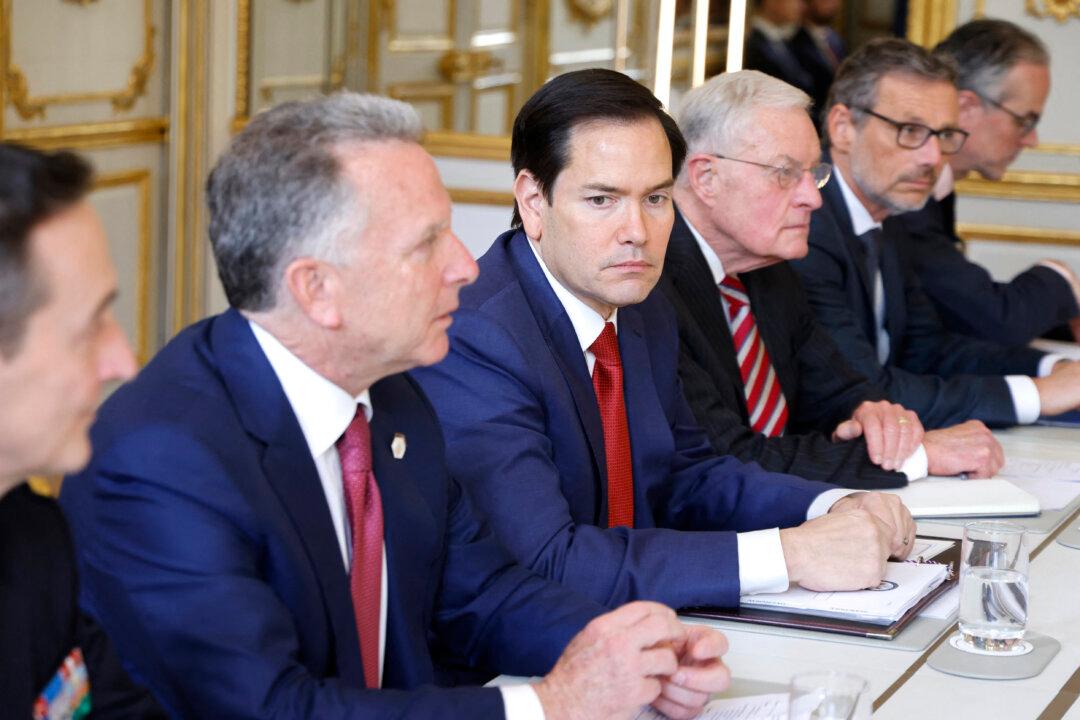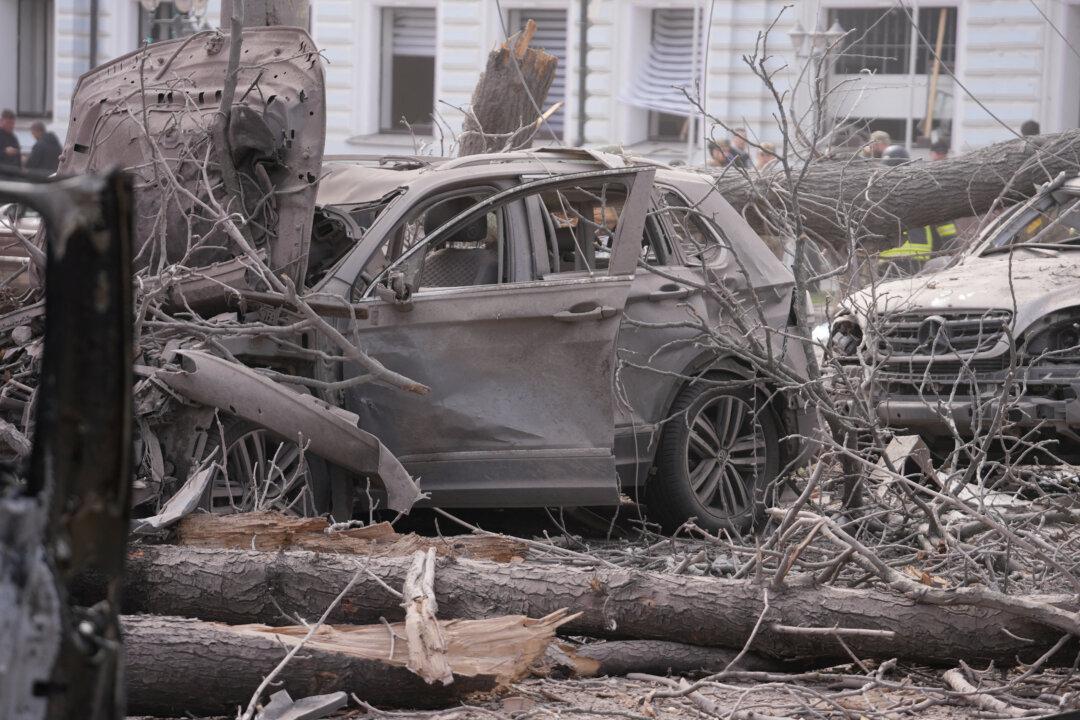Russia’s Ministry of Defence has claimed that its forces have downed two UK-made Storm Shadow cruise missiles fired into its territory from Ukraine.
“Air defences shot down two Storm Shadow cruise missiles manufactured by Britain, six HIMARS rockets manufactured by the USA, and 67 unmanned aerial vehicles of the aircraft type,” the ministry stated in its Nov. 21 daily report.
The Epoch Times could not independently verify the claims. Photos of apparent debris from a Storm Shadow missile were posted on Telegram on Wednesday.
Peskov declined to comment as to whether Russia had evidence that UK-made Storm Shadow missiles had been used in the attack.
“Right now, I would not want to comment further on the subject, which is the purview of our military agency,” Peskov said in remarks carried by Russia’s state-owned TASS news agency.
The Russian claims have been accompanied by reports by British media outlets, based largely on unnamed official sources, suggesting that Ukraine had fired a volley of Storm Shadow missiles into western Russia.
When asked about the reports at a scheduled meeting of the IK Parliament’s defense committee, British Secretary of State for Defence John Healey said he would not comment on the “operational details of the conflict.”
“It risks both operational security and, in the end, the only one that benefits from such a public debate is President Putin,” Healey said on Nov. 21.
Earlier on Thursday, the Ukrainian air force claimed that Russia had fired an intercontinental ballistic missile at Ukraine’s central-eastern city of Dnipro.
According to the air force, the missile was fired from Russia’s southern Astrakhan region on the morning of Nov. 21 and targeted enterprises and critical infrastructure in Dnipro.
Kyiv’s air force did not specify what kind of ballistic missile was used, and it remains unclear whether the reported Russian strike caused any significant damage.
Russian ballistic missiles can carry both conventional and nuclear payloads.
Moscow has yet to confirm Kyiv’s claim that it launched a ballistic missile at Dnipro.

Fears Mount of Wider Conflict
The reported exchanges come amid steadily mounting fears of a confrontation between Russia and Kyiv’s Western backers, led by the United States.On Nov. 19, Kyiv reportedly fired six U.S.-made ballistic missiles into Russia’s Bryansk region, which shares a border with northeast Ukraine.
According to Russia’s Ministry of Defence, five U.S.-made army tactical missile systems (ATACMSs) were shot down over Bryansk while a sixth was destroyed.
The Epoch Times could not independently verify the ministry’s claims.
Addressing reporters on Nov. 19, Ukrainian President Volodymyr Zelenskyy neither confirmed nor denied the missile strike on Bryansk, merely saying that Kyiv had “long-range capabilities” and would “use of all these.”
This week began with a spate of media reports citing unnamed officials stating that Washington had lifted its longstanding ban on Kyiv’s use of U.S. long-range missile systems—including ATACMS—to hit targets deep inside Russia.
Pentagon’s Singh declined to comment on the reports.
There has also been speculation that Paris and London, both staunch supporters of Ukraine, could follow Washington’s apparent lead by lifting similar bans on Kyiv’s use of French-made SCALP and UK-made Storm Shadow missile systems, respectively.
Moscow has warned that such steps would bring Ukraine’s Western backers into a direct conflict with Russia and “radically change” the “essence and nature” of the conflict, which is now in its 33rd month.
The Kremlin has said that Ukrainian strikes into Russia—with the use of advanced Western missile systems—would usher in a “qualitatively new phase” of tension between nuclear powers.
On Nov. 19, Russian President Vladimir Putin greenlit a revision to Russia’s nuclear-warfare doctrine, allowing for a nuclear response if Kyiv used Western weapons to strike targets inside Russian territory.
Commenting on the move, the Pentagon’s Singh said the United States would “continue to monitor” developments, noting that the Pentagon had seen no indications that Russia was “preparing to use a nuclear weapon within Ukraine.”







